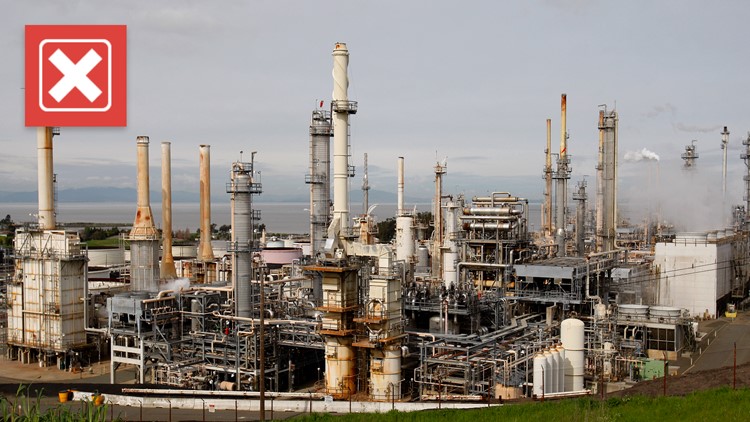Gas prices continue to soar in the United States, with AAA reporting a record high average of $4.25 per gallon on March 9.
That comes after President Joe Biden announced on March 8 that the U.S. is banning all Russian oil imports amid the country’s ongoing attack on Ukraine, further reducing supply. On the same day, Rep. Chuck Fleischmann (R-TN) wrote in a tweet that the U.S. “must restart domestic oil production now!” Other social media users have also claimed that Biden has “shut down domestic production” of oil.
Trisha C. also emailed the VERIFY team to ask if the U.S. has stopped producing oil.
THE QUESTION
Has the United States stopped producing oil?
THE SOURCES
- U.S. Energy Information Administration (EIA)
- Patrick DeHaan, Head of Petroleum Analysis at GasBuddy
- International Energy Agency (IEA)
- Ed Hirs, University of Houston Energy Fellow
THE ANSWER
No, the United States hasn’t stopped producing oil, but it does rely on other countries for oil.
WHAT WE FOUND
The United States has not stopped producing oil – in fact, production is slowly rising, Patrick DeHaan, Head of Petroleum Analysis at GasBuddy, told VERIFY.
The U.S. produced an average of 11.6 million barrels of oil per day in December 2021, according to the U.S. Energy Information Administration (EIA). The agency forecasts that U.S. production will rise to an average of 12 million barrels per day in 2022 and what would be a record high of 13 million barrels per day in 2023. The previous annual average record of 12.3 million barrels per day was set in 2019.
DeHaan said the U.S. consumes 20 to 21 million barrels of oil per day and produces 11.6 million of those barrels. Ed Hirs, Energy Fellow at the University of Houston, made similar estimates. That means the U.S. also relies on other countries for oil to refine into products like gasoline.
But the daily imports and exports aren’t just a matter of supply and demand. There’s also an economic element to the transactions.
The U.S. could subsist on oil produced at home, but it would come at a higher cost to make it worthwhile for domestic producers, Hirs explained.
“The U.S. is the high cost producer in the global market. The reason we import oil from Russia is because they produce it at a lower price than we do,” he wrote in an email to VERIFY.
So how will the ban on Russian oil affect supply in the U.S.?
According to the International Energy Agency (IEA), Russia is the world’s largest exporter of oil to global markets and the second largest crude oil exporter behind Saudi Arabia, but less than 10% of those exports go to the U.S. About 60% of Russia’s oil exports go to European countries and another 20% go to China. In November 2021, oil from Russia accounted for about 7% of the United States’ total imports, IEA data show.
EIA data from 2021 show that the U.S. imported the most crude oil from Canada, not Russia.
During his State of the Union address, Biden announced that the U.S. and 30 other countries are releasing 60 million barrels of oil from their joint reserves, with half of that amount coming from the United States. Still, the president acknowledged that the ban on Russian oil imports will push gas prices even higher.
AAA also explained that the release’s impact on pricing has been limited “given that the amount of oil planned for release is small in comparison to the amount that flows daily from Russia to other countries around the globe.”
More from VERIFY: No, you can't tell if the gas at the pump comes from Russian oil













